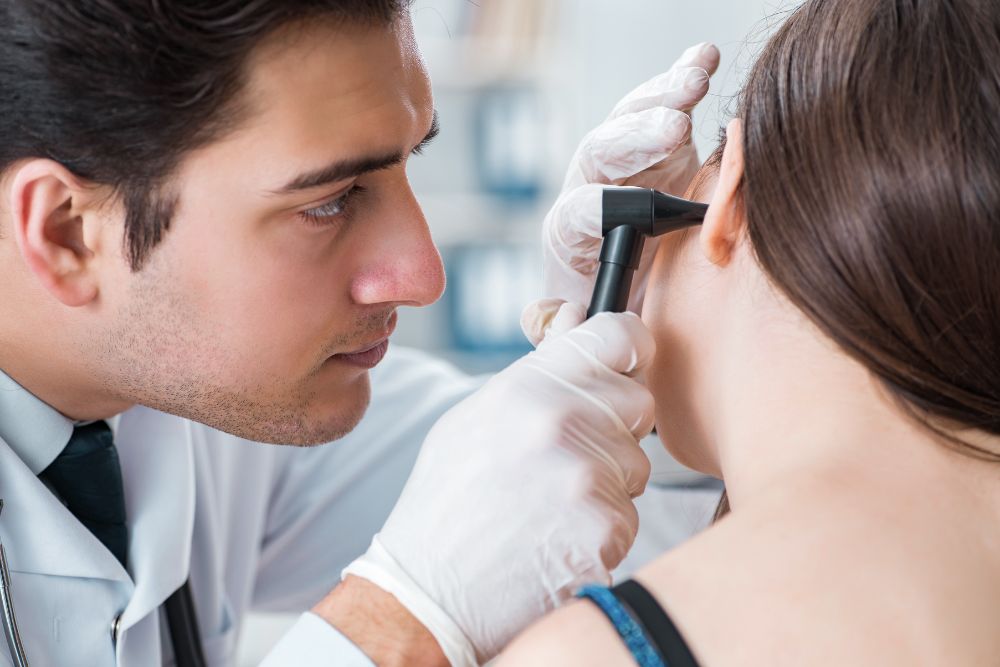
What is Tympanoplasty?
While some perforations can heal on their own, many require Tympanoplasty, a restorative surgery that repairs the eardrum and/or the ossicles in the middle ear. The ossicular chain, consisting of the Malleus, Incus, and Stapes bones, transmits sound energy through the middle ear to the inner ear, so damage to this chain can significantly affect hearing. If a perforation has not healed within three months, it is unlikely to repair itself without intervention.
Recovering from Tympanoplasty Perforated Eardrum Repair? Here Are Some Tips.
Refrain from sudden head movements.
Don’t fly, scuba dive, swim, or play sports.
Avoid getting water in your ears for up to three months.
Is Tympanoplasty
Right For You?
Tympanoplasty, performed under local or general anesthesia, has five different types, determined by a hearing test with one of our ear and hearing experts. A perforated eardrum can reduce your hearing and increase infection risk, as it serves as a barrier against water, bacteria, and foreign substances. Consult a specialist to see if tympanoplasty is the right solution to restore your hearing.

Prevention and Care
To prevent further eardrum complications, protect your ears in loud settings by using earplugs or earmuffs at loud events like concerts or firework shows. Also practice safe hygiene by avoiding the insertion of foreign objects into your ears and gently cleaning your ears with a Q-tip without applying too much force to avoid tearing your eardrum.